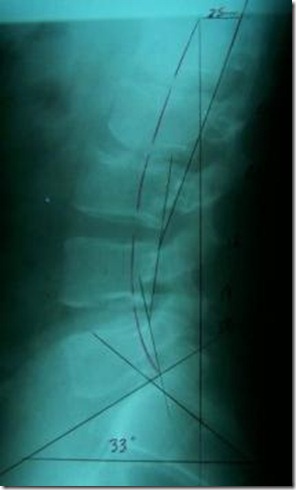Postural Mirror-Image® Core Strengthening
 Sunday, February 14, 2010 at 2:39AM
Sunday, February 14, 2010 at 2:39AM Donald W. Meyer, DC
President-Founder Circular Traction Supply
INTRODUCTION
Investigations have identified that up to 75% of patients with acute uncomplicated low back pain will continue to have problems (1). CBP® believes that the principal reason for the acute low back injury being a stepping stone to a chronic injury has to do with adverse, altered and generalized abnormal mechanical loading of the spinal system secondary to altered posture or structural (2). Reducing these abnormal loads through the correction of the aberrant posture and/or structure would help to normalize the physical strain on joints, muscles and other soft tissues. It is increasingly obvious that physical rehabilitation incorporating structural (posture and spine) and functional correction, will lead to a lasting, improved, pain-free patient outcome.
I will discuss the treatment and long term resolution of a post-injury, chronic low back disorder, utilizing procedures that combine functional as well as structural rehabilitation of the spine/posture.
CASE STUDY
A tall, lean 35 year old male presented with left-sided lumbo-sacral pain that radiated into his left buttocks. He described the back pain as a constant dull ache that is aggravated by twisting and turning and relieved by leaning forward. He rates the low back/buttocks pain on a 0-10 numeric pain scale as a two to three on average and a four at the worse. A (Revised Oswestry) Low Back Pain and Disability Questionnaire revealed an 18% restriction of his activities of daily living because of the pain. Surfing causes an increase of his low back stiffness. In fact, it was a bad fall while surfing about three weeks ago that started the low back/buttocks pain. This is his first episode of low back pain.
On his initial exam, the patient’s posture was inspected and revealed a posterior thoracic translated lateral posture. His A-P posture was relatively normal. A computerized range of motion test demonstrated restricted extension and restricted sacral/hip flexion resulting in an 8% impairment of normal movement. He also denoted an increase of his pain with left lumbar rotation and extension (Kemp’s Test). His radiographic exam was basically normal on the A-P view, but revealed a 25 millimeter posterior thoracic translation on the lateral view with a decreased sacral angle of 33 degrees (normal 40 degrees). He had a complete loss of lordosis at L1/L2 and L2/L3 (See X-ray #1).
This patient was diagnosed as having a chronic left lower lumbar facet syndrome with aberrant posture. Since he was chronic and not in any acute pain, he was immediately started on a rehabilitative treatment program that included side-posture diversified spinal manipulation and ambulatory postural remodeling utilizing the Spinal Remodeling Brace™ and Posture Corrective Exercise Belts™.
The Spinal Remodeling Brace™ is a patented device that can pre-stress the patient’s lateral
thoraco-lumbo-pelvic posture into a corrected or mirror-image® state and hold them in that posture while they perform functional activities such as walk on a treadmill at approximately 1.8 to 2.2 mph. After 10-12 minutes of corrective bracing, the device is removed and thoracic body weights are placed on the patient’s superior posterior thoracic region to induce a neuro-muscular anterior translation of the thorax on pelvis. The patient again performs 10-15 minutes of treadmill walking with the thoracic body weights.
After the treadmill session, the posterior thoracic body weights were left on and the patient was asked to perform standing core strengthening/balance exercises. These were done on a Power-Plate™ Whole Body Vibration Unit and on the I Joy Board™. The I Joy Board is a motorized wobble board.
Numerous studies have shown that most patients with chronic lumbar disorders have impaired balance and core muscle function (3, 4) Panjabi has authored a hypothesis that sub failure spinal ligament injuries (including the facet joints and intervertebral discs) can damage the embedded mechano-receptors and lead to chronic muscle dysfunction (5). Correcting these defects has been shown to improve posture and help to reduce or eliminate chronic spinal pain.
After 15 treatments, this patient was re-evaluated. He had a complete resolution of his pain and no impairment of his normal lumbar range of motion. His post-treatment lateral lumbar x-ray revealed an improved upper lumbar lordosis, a normal 41 degree sacral tilt and a reduction of his posterior thoracic translation to just three millimeters (See x-ray #2).
The patient was seen five months later for an elbow problem and had maintained his improved lateral thoraco-lumbo-pelvic posture and spinal pain-free status.
CONCLUSION
According to Dr. Austin McMillin, primary conference presenter on spinal rehabilitation at the 2008 Meeting of the American Back Society. “Axial structures are neurologically distinct in their control patterns, with more focus on control and endurance rather than strength”. Therefore, he emphasizes free-standing exercises more than floor and ball exercises to facilitate greater reliance on the body’s own inherent stability mechanisms.
A study by Tjernstrom et al has showed that repeated performance of a postural alteration induces a long-term motor memory for achieving that novel postural position (6).
These are some of the reasons why standing functional mirror-image bracing, body weighting and core strengthening work so well at changing the sagittal posture/structure of a relatively young, flexible patient. Some type of structural/postural corrective traction would probably have been necessary in an older, more fibrotic, structural degenerated individual.
The Spinal Remodeling Brace™, Posture Corrective Body Weights and I Joy Board™ are all available atwww.circulartraction.com.
Figures: X-ray #1 and #2
REFERENCES
1. Harrison DE et al. CBP® Stru. Rehab. Lumbar Sp. Chap. 1, Ref. 31-39, CBP Seminars, Inc.; 2007.
2. Harrison DE et al. CBP® Stru. Rehab. Lumbar Sp. Chap. 1, CBP Seminars, Inc.; 2007.
3. Luoto BM et al. Spine 1998: Vol 23, (19): 2081-90.
4. Radebold A et al. Spine 2001: Vol 26, (7): 724-30.
5. Panjabi MM. Eur Spine J 2005, Jul 27 [Epub ahead of print].
6. Tjernstrom PA et al. Gait and Posture 2002; 15: 75-82.
 CBP Seminars | Comments Off |
CBP Seminars | Comments Off | 



